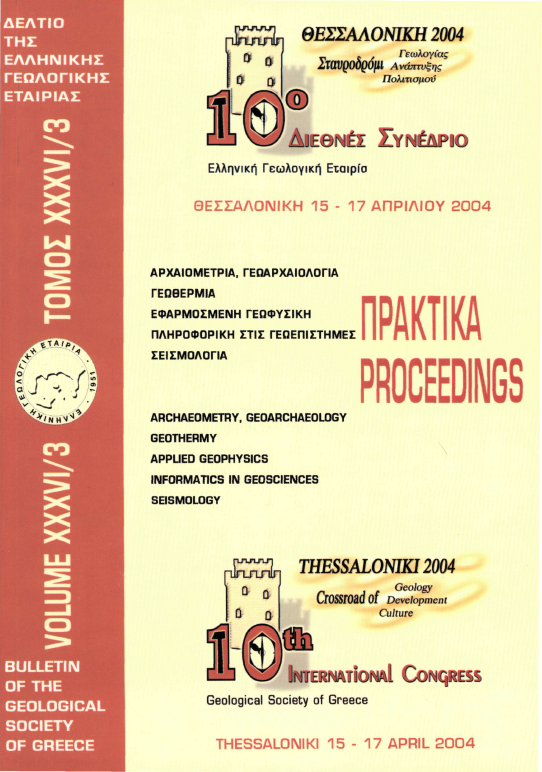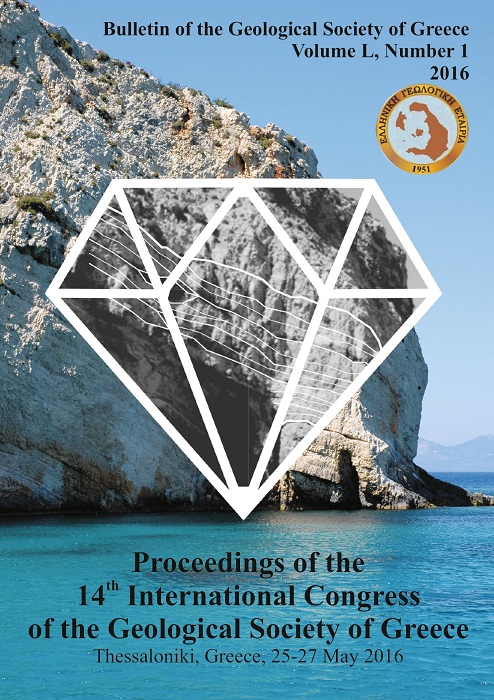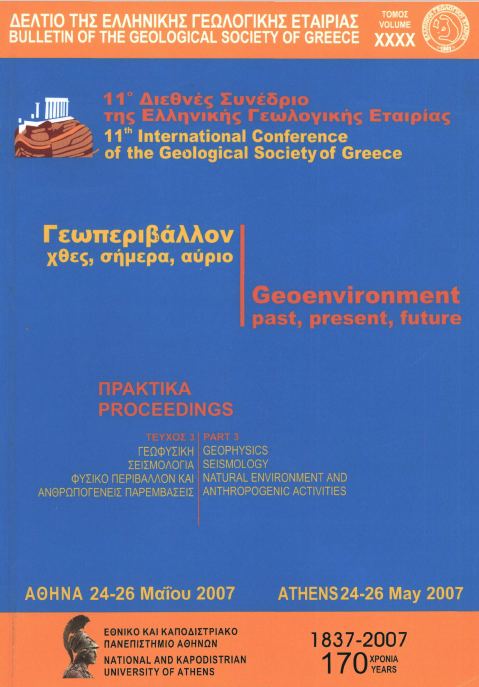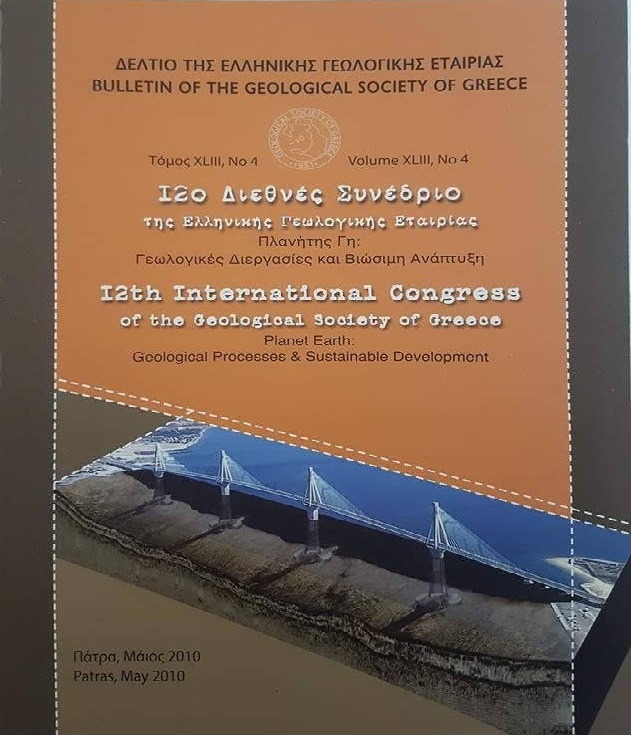MAPPING OF CODA ATTENUATION AT THE EXTEND OF THE NATIONAL SEISMOLOGICAL NETWORK OF GREECE
Περίληψη
Coda decay rates of 538 vertical components corresponding to local earthquakes which occurred in Greece during the period 1998 to 1999 were used to deduce the coda quality factor (Qc) characteristics in the Hellenic area. The seismograms have been selected from a broader sample of 776 records obtained at 8 stations of the National Seismographic Network operated by the Institute of Geodynamics of the National Observatory of Athens. Earthquake magnitudes range from 2.5 to 4.0; epicentral distances and depths are smaller than 100 km and 40 km, respectively. Using the Single Back Scattering model, the dependence of Qc on frequencies between 1 and 10 Hz has been investigated at each station and the usual Qc =Qo f relationships have been deduced. The spatial distribution of Qo has been drawn using waves that sample approximately equivalent ellipsoidal volumes with semiminor axis up to 100 km. The corresponding map shows a decreasing trend in SN direction.
Λεπτομέρειες άρθρου
- Πώς να δημιουργήσετε Αναφορές
-
Baskoutas, I., Herraiz, M., Perez, A. C., Kalogeras, I., Panopoulou, G., Sachpazi, M., & Papadopoulos, G. (2004). MAPPING OF CODA ATTENUATION AT THE EXTEND OF THE NATIONAL SEISMOLOGICAL NETWORK OF GREECE. Δελτίο της Ελληνικής Γεωλογικής Εταιρείας, 36(3), 1371–1378. https://doi.org/10.12681/bgsg.16503
- Ενότητα
- Σεισμολογία

Αυτή η εργασία είναι αδειοδοτημένη υπό το CC Αναφορά Δημιουργού – Μη Εμπορική Χρήση 4.0.
Οι συγγραφείς θα πρέπει να είναι σύμφωνοι με τα παρακάτω: Οι συγγραφείς των άρθρων που δημοσιεύονται στο περιοδικό διατηρούν τα δικαιώματα πνευματικής ιδιοκτησίας επί των άρθρων τους, δίνοντας στο περιοδικό το δικαίωμα της πρώτης δημοσίευσης. Άρθρα που δημοσιεύονται στο περιοδικό διατίθενται με άδεια Creative Commons 4.0 Non Commercial και σύμφωνα με την οποία μπορούν να χρησιμοποιούνται ελεύθερα, με αναφορά στο/στη συγγραφέα και στην πρώτη δημοσίευση για μη κερδοσκοπικούς σκοπούς. Οι συγγραφείς μπορούν να: Μοιραστούν — αντιγράψουν και αναδιανέμουν το υλικό με κάθε μέσο και τρόπο, Προσαρμόσουν — αναμείξουν, τροποποιήσουν και δημιουργήσουν πάνω στο υλικό.








